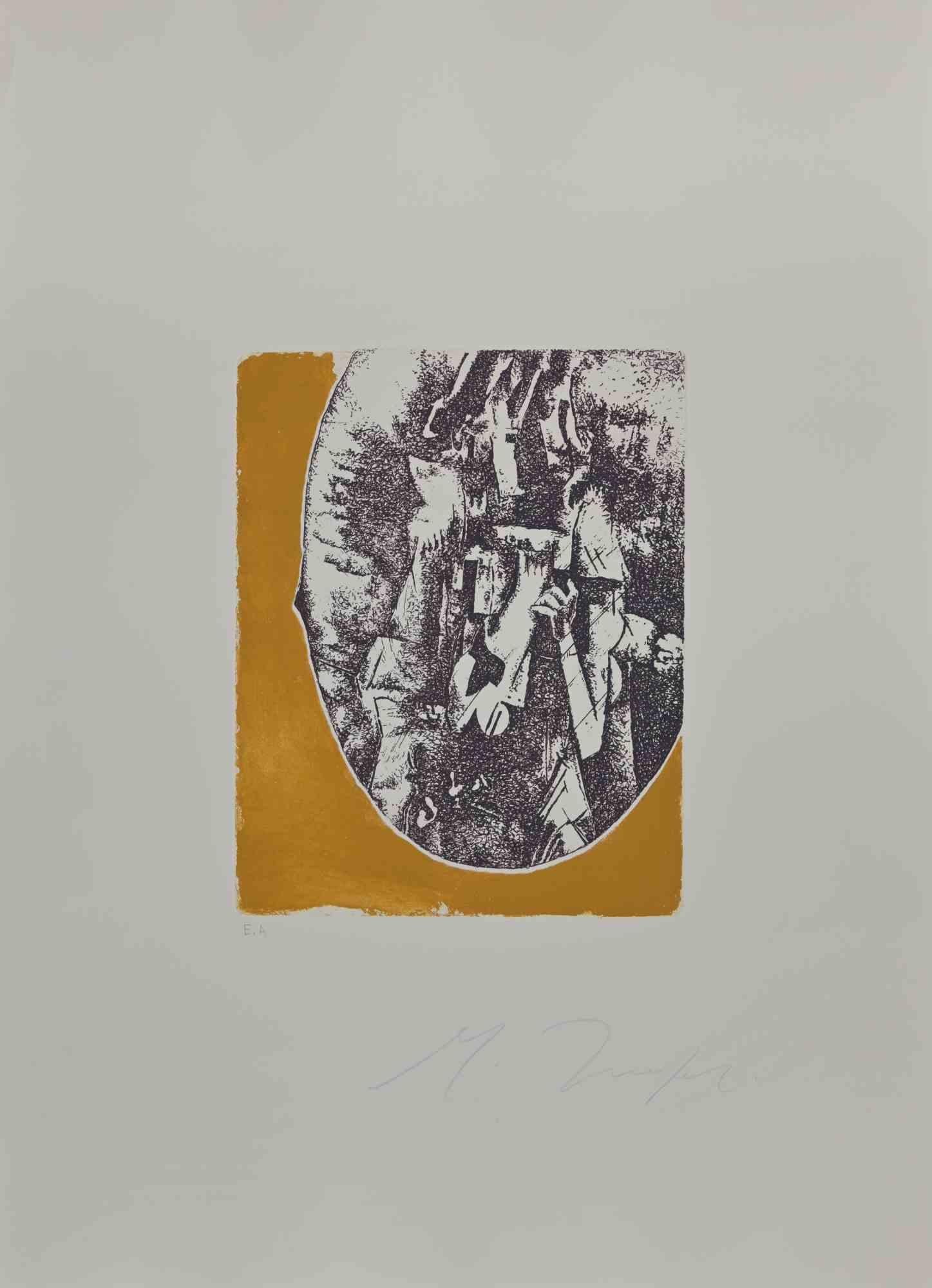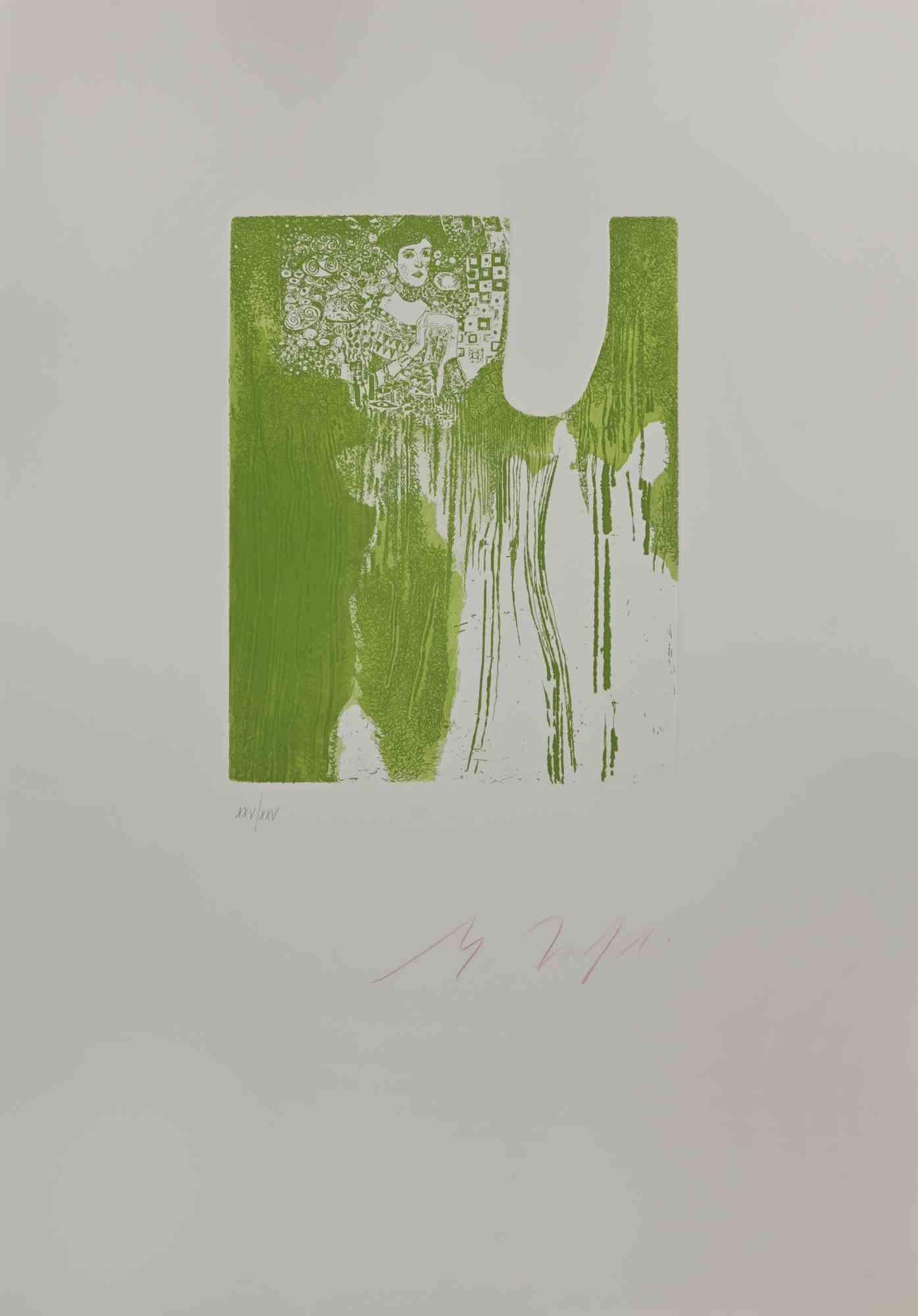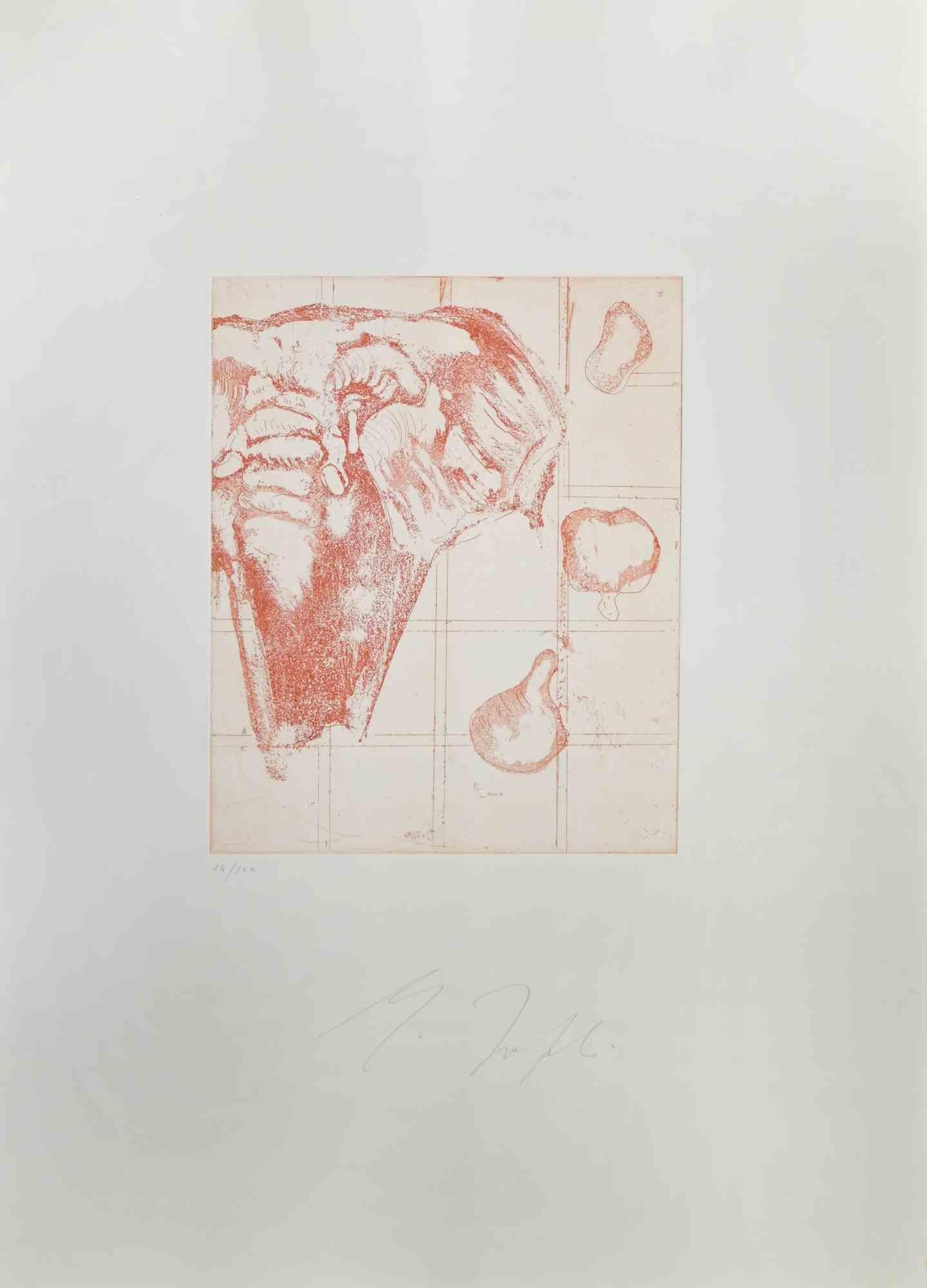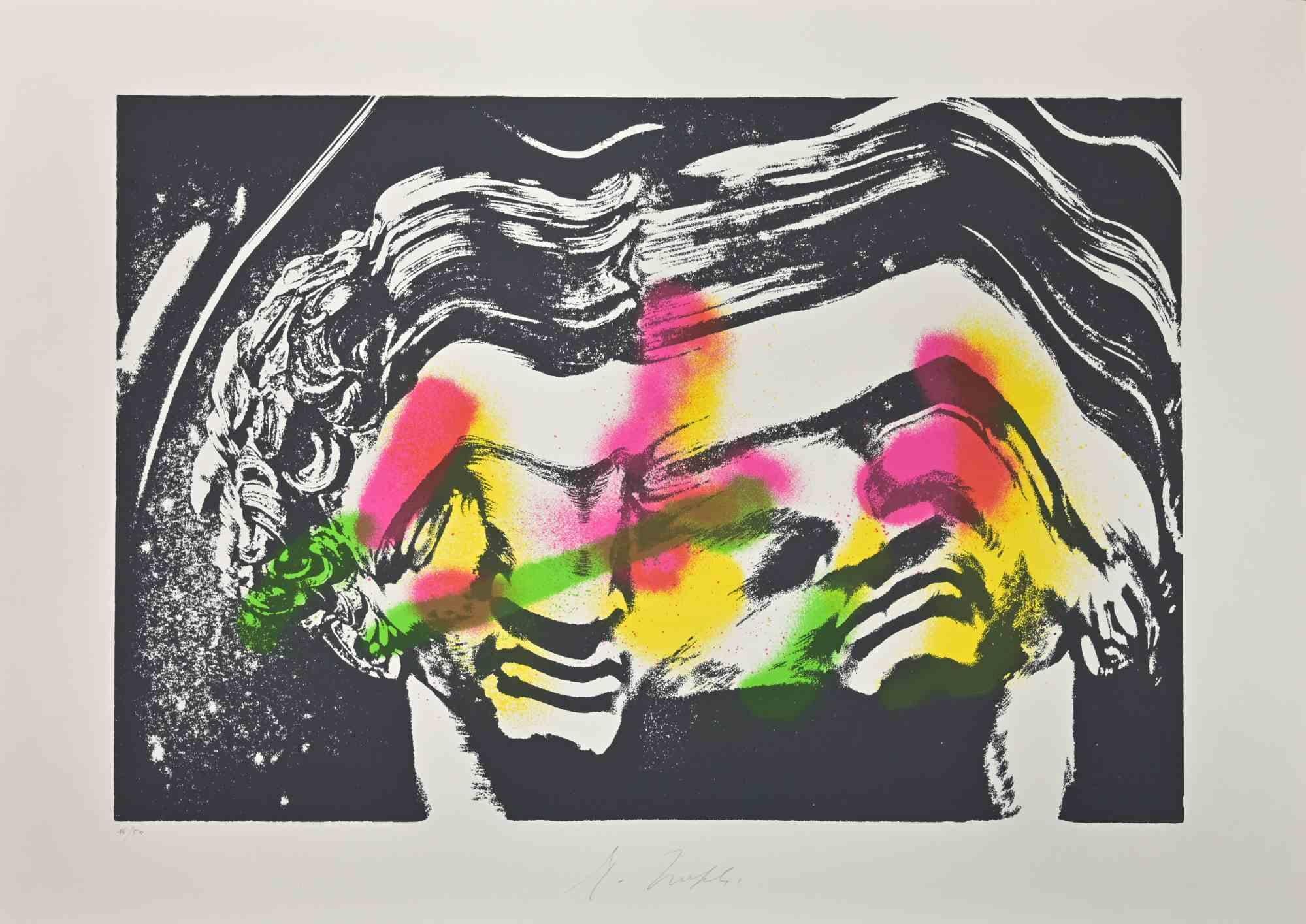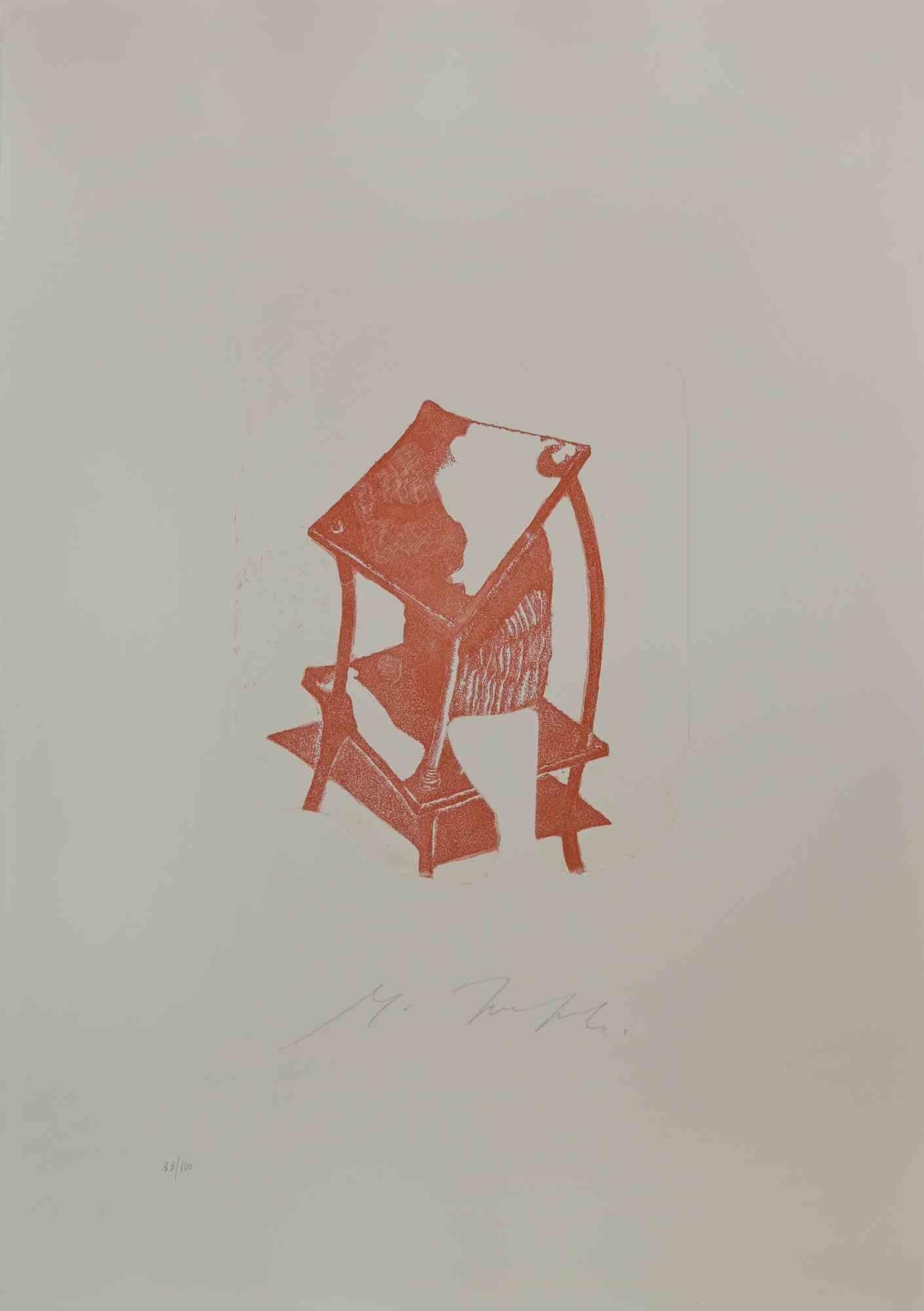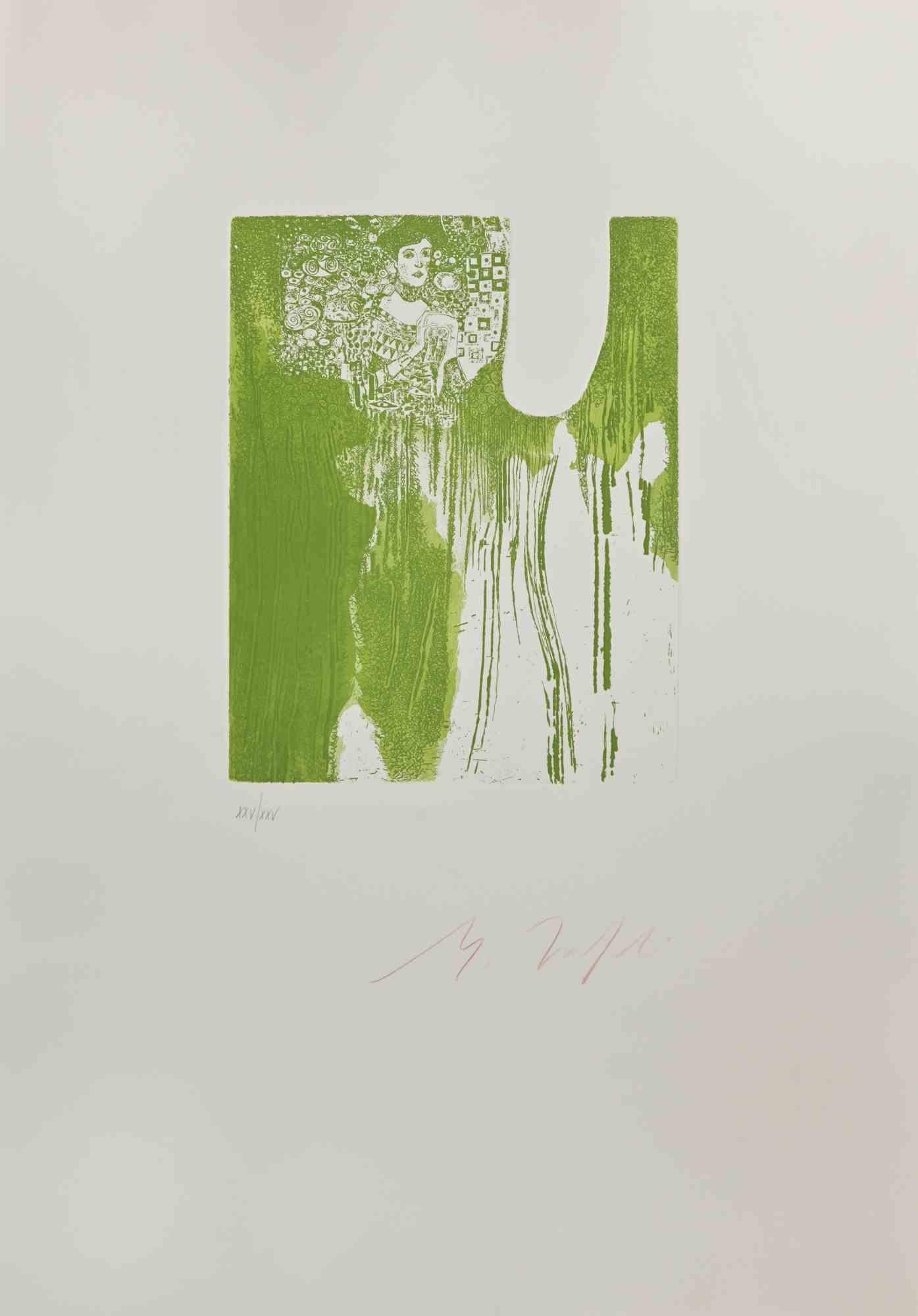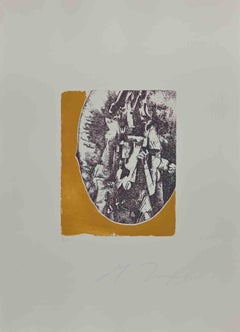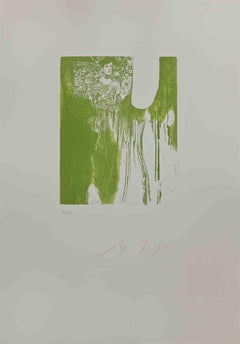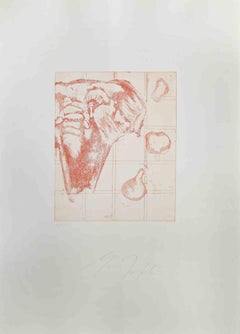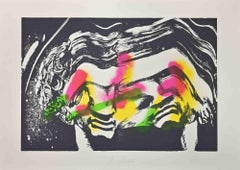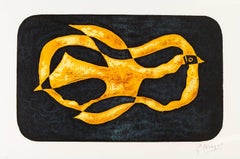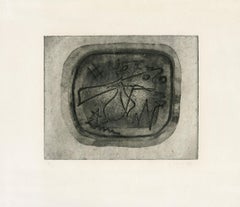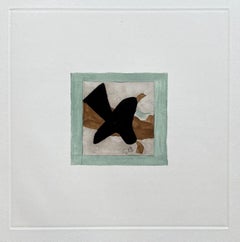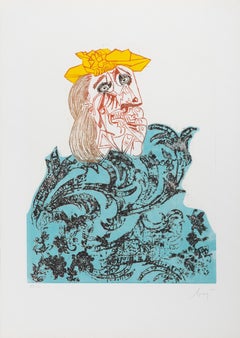Items Similar to Braque - Etching by Mino Trafeli - 1980
Want more images or videos?
Request additional images or videos from the seller
1 of 6
Mino TrafeliBraque - Etching by Mino Trafeli - 19801980
1980
$354.65
£264.63
€300
CA$493.45
A$552.18
CHF 287.25
MX$6,653.39
NOK 3,616.37
SEK 3,416.87
DKK 2,284.13
About the Item
Etching, numbered and signed, by the Italian artist Mino Trafeli (Volterra, Italy 1922-2018). This important print is dedicate to Georges Braque.
From the album Rivoluzione, composed of 6 engravings made by M. Trafeli and printed at La Stamperia, Livorno.
His path is a continuous reflection on the work of art (object, sculpture, assembly), which led him to experiment with every form of artistic expression and every means available to achieve it: thus, over the years, the activity of sculptor and painter have gone side by side the intense graphic production, the use of photography, video and the stage.
- Creator:Mino Trafeli
- Creation Year:1980
- Dimensions:Height: 27.56 in (70 cm)Width: 19.69 in (50 cm)Depth: 0.04 in (1 mm)
- Medium:
- Movement & Style:
- Period:
- Framing:Framing Options Available
- Condition:Insurance may be requested by customers as additional service, contact us for more information.
- Gallery Location:Roma, IT
- Reference Number:Seller: T-1398711stDibs: LU650312387122
About the Seller
4.9
Platinum Seller
Premium sellers with a 4.7+ rating and 24-hour response times
1stDibs seller since 2017
7,662 sales on 1stDibs
Typical response time: 3 hours
- ShippingRetrieving quote...Shipping from: Roma, Italy
- Return Policy
Authenticity Guarantee
In the unlikely event there’s an issue with an item’s authenticity, contact us within 1 year for a full refund. DetailsMoney-Back Guarantee
If your item is not as described, is damaged in transit, or does not arrive, contact us within 7 days for a full refund. Details24-Hour Cancellation
You have a 24-hour grace period in which to reconsider your purchase, with no questions asked.Vetted Professional Sellers
Our world-class sellers must adhere to strict standards for service and quality, maintaining the integrity of our listings.Price-Match Guarantee
If you find that a seller listed the same item for a lower price elsewhere, we’ll match it.Trusted Global Delivery
Our best-in-class carrier network provides specialized shipping options worldwide, including custom delivery.More From This Seller
View AllAfter Braque - Etching by Mino Trafeli - 1980
Located in Roma, IT
After Braque is an etching realized by Mino Trafeli in 1980.
70 x 50 cm, not framed.
Good conditions.
Mino Trafeli (Volterra, December 29, 1922 - Volterra, August 9, 2018) was an...
Category
1980s Modern Figurative Prints
Materials
Paper, Etching
After Klimt - Etching by Mino Trafeli - 1980
Located in Roma, IT
After Klimt is an artwork realized by Mino Trafeli in 1980.
Etching, 70 x 50 cm., not framed.
Edition XXV/XXV. Handsigned in the lower margin.
Good conditions.
Mino Trafeli (V...
Category
1980s Modern Figurative Prints
Materials
Paper, Etching
Africa - Etching by Mino Trafeli - 1969
Located in Roma, IT
Etching, numbered and signed, by the Italian artist Mino Trafeli (Volterra, Italy 1922-2018).
His path is a continuous reflection on the work of art (obj...
Category
1960s Modern Figurative Prints
Materials
Paper, Etching
Composition - Lithograph by Mino Trafeli - 1980s
Located in Roma, IT
Composition is a Lithograph realized by Mino Trafeli in 1980s.
Edition 16/50.
Hand signed.
Good conditions.
Mino Trafeli (Volterra, December 29, 1922 - Volterra, August 9, 20...
Category
1980s Modern Abstract Prints
Materials
Paper, Lithograph
After Duchamp - Etching by Mino Trafeli - 1980
Located in Roma, IT
After Duchamp is an artwork realized by Mino Trafeli in 1980.
Etching, 70 x 50 cm., not framed.
Edition 33/100. Handsigned in the lower margin.
Good conditions.
Mino Trafeli (...
Category
1980s Modern Figurative Prints
Materials
Paper, Etching
Klimt - Etching by Mino Trafeli - 1980
Located in Roma, IT
Etching, numbered and signed, by the Italian artist Mino Trafeli (Volterra, Italy 1922-2018).
This important print is dedicate to Gustav Klimt, made with...
Category
1980s Modern Figurative Prints
Materials
Paper, Etching
You May Also Like
After Georges Braque - Antiborée - Lithograph
Located in Collonge Bellerive, Geneve, CH
Lithograph after Georges Braque.
Signed in the plate
Edition of 150
Dimensions: 76 x 117 cm
Bibliography:
« Les Métamorphoses de Braque» of Heger de Loewenfeld and Raphaël de Cuttoli , Editions FAC, Paris, 1989.
In 1961 Georges Braque decided with his laidary friend Heger de Loewenfeld to pick up certain of his works to in order to create artworks, this beautiful litograph is one of them.
Héméra in the Mythology:
In Greek mythology Hemera was the personification of day and one of the Greek primordial deities. She is the goddess of the daytime and, according to Hesiod, the daughter of Erebus and Nyx (the goddess of night). Hemera is remarked upon in Cicero's De Natura Deorum, where it is logically determined that Dies (Hemera) must be a god, if Uranus is a god. The poet Bacchylides states that Nyx and Chronos are the parents, but Hyginus in his preface to the Fabulae mentions Chaos as the mother/father and Nyx as her sister.
She was the female counterpart of her brother and consort, Aether (Light), but neither of them figured actively in myth or cult. Hyginus lists their children as Uranus, Gaia, and Thalassa (the primordial sea goddess), while Hesiod only lists Thalassa as their child.
The father of Cubism
Three Cubist that distinguishes art historian periods were initiated and developed by Georges Braque: The Cubist Cézanne (1907-1909), Executive (1909-1912) and synthetic (1912-1922).
Post-Impressionist and fawn, Braque no longer adheres to the contingency of a decorative way or the other. Cézanne’s paintings exhibited at the Grand Palais during the retrospective of 1907 are a revelation: Cézanne sought and invented a pictorial language. In his footsteps, Braque went to the South with the reasons of the Master. He returned with Estaque landscapes and surprising Ciotat it keeps Cezanne geometric model and retains the “passages” continuity from one surface to another to create the sensation of “turning around” of the object represented. But he wants to go after the consequences of the vision of Cezanne. In his paintings Houses in L’Estaque (1908) it simplifies the volumes of houses, neglects detail by removing doors and windows: the plastic rhythm that builds the table. Large Nude , a masterpiece of the period, can be considered the first work of Cézanne cubism .
Systematizing and deepening Braque discoveries open the door analytical cubism. In 1909, his painting became more cerebral than sensual. The pattern is recreated in the two-dimensionality of the canvas, leaving aside any illusionistic perspective. In Still Life with Violin, objects are analyzed facets according to their characteristic elements, each facet referring to a particular view of the object. There are so many facets of points selected view: Table reflects the knowledge of the object and the ubiquity of the eye. Moreover, Braque is looking for the essence of the objects in the world rather than their contingency, which explains the absence of light source and use of muted colors (gray, ocher), contingent aspects of the object . But formal logic has stepped facets, erased any anecdote to the object and ultimately led to his painting a hermetic more marked on the edge of abstraction (see the series of Castle Roche-Guyon ).
Braque, anxious to keep the concrete and refusing at all costs that the logic of Cubism takes the paintings to abstract, reintroduced signs of reality in his paintings in 1912 marks the beginning of Synthetic Cubism. Historians speak of “signs of real” rather than reality because what interests Braque, this is not to put reality into a table, but to create a painting which, by its language, refers to the real. To do this, he invented two major techniques XX th century inclusions and contributions. The inclusions consist of painting objects that have no real depth, materials (wallpaper in Nature morte aux playing cards faux wood is a pictorial inclusion) or letters (calligraphic inclusion in Portuguese ), made first brush and a few months later stencil. Contributions are defined in contrast with the collage on canvas of foreign materials: glued or sand paper, sawdust, etc.. Regarding the collages, Braque used for the first time in September 1912 a piece of adhesive paper imitating faux wood Compote...
Category
1950s Cubist Animal Prints
Materials
Lithograph
Théogonie II - Abstract, Etching, Greek, Mythology, Acient, Black, Gray
By Georges Braque
Located in Köln, DE
Etching "Théogonie II" by Georges Braque from 1949.
The edition comprises 90 copies.
The present copy is numbered in pencil below the platemark on the left, signed on the right, ...
Category
1940s Post-War Abstract Prints
Materials
Etching
The Bird - Etching Signed in the Plate - 1965 (Orozco #783)
By George Braque
Located in Paris, IDF
Georges Braque
The bird
Etching in colors (Crommelynck workshop)
Signed in the plate with the monogram
Edition of 250 copies not numbered
On Arches vellum 38 x 28 cm (c. 15 x 11 in...
Category
1960s Modern Abstract Prints
Materials
Etching
Baj Chez Picasso 1, Cubist Etching by Enrico Baj
By Enrico Baj
Located in Long Island City, NY
Artist: Enrico Baj, Italian (1924 - 2003)
Title: Baj Chez Picasso 1
Year: 1969
Medium: Aquatint Etching, Signed and numbered in pencil
Edition: 58/100
Image Size: 19.5 x 15.5 inches
...
Category
1960s Cubist Portrait Prints
Materials
Etching
Athênê, Modern Offset Lithograph by Georges Braque
By Georges Braque
Located in Long Island City, NY
Georges Braque, French (1882 - 1963) - Athene, Year: circa 1963, Medium: Offset Lithograph, Image Size: 9 x 7.25 inches, Size: 13.5 x 11 in. (34.29 x 27.94 cm)
Category
1960s Modern Figurative Prints
Materials
Lithograph
Guerrier, Abstract Aquatint Etching by Antoni Clave
By Antoni Clavé
Located in Long Island City, NY
Artist: Antoni Clave, Spanish (1913 - 2005)
Title: Guerrier
Year: 1970
Medium: Etching with Aquatint, signed and numbered in pencil
Edition: EA
Image Size: 23.5 x 15.5 inches
Size: 3...
Category
1970s Modern Figurative Prints
Materials
Aquatint, Etching
$960 Sale Price
20% Off
More Ways To Browse
Alex Katz Flowers
Antique Opera Posters
Cigarette Ball
Clown On Horse
Dali Frank Hunter
Dali Nude Lithograph
Dali Paradise Canto
Damien Hirst Lithograph
Degas Signed Lithograph
Die Brucke
Glaser Designs
Jacob Lawrence Signed
Michelangelo Etching
Nude Vintage Poster
Orientalist Prints Art
Robert Barry
Shepard Fairey Hope
Tom Phillips
